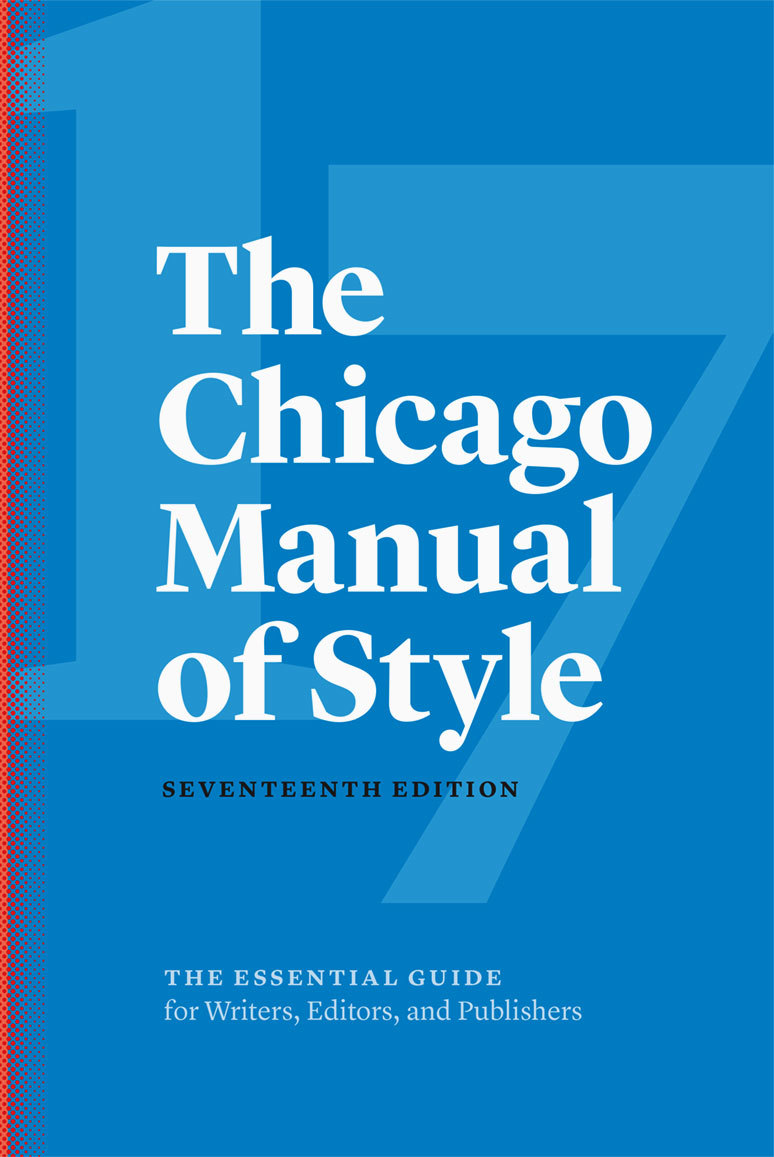
For 111 years, editors and writers have been turning to the Chicago Manual of Style for answers to questions about style and the publishing process.
It’s been seven years since the last CMOS update, when the powder-blue covered 16th edition hit the shelves. But the 17th edition is on its way this year (look for it in September), and 2017 ACES attendees got a preview of some of the updates during “What’s New at the Chicago Manual of Style,” presented Thursday by Chicago Manual of Style Online Q&A editor Carol Fisher Saller.
Saller said the new edition responds to changes in language based on social changes and advancing technology, updates and expands on citation recommendations and reflects the latest publishing practices.
Among those social changes are a need for genderless grammar and for texts that are accessible to people with disabilities. Those include revising and expanding the manual’s advice on singular they and adding “cis-“ to its list of prefixes for hyphenating compounds.

Some other specific changes in the 17th edition of CMOS will be to:
Saller said subscribers to the online edition will automatically receive full access to the 17th edition in September and will also continue to have full access to both the 17th and 16th editions until the end of their subscription.
That helps ease the transition to the new edition, Saller said.
Saller gave an email interview to ACES that expands on some of the changes. Following is the interview, edited for length.
ACES: What do you think will be the first thing that users will notice about the new edition?
Saller: Literally? Readers will first notice the primary colors and bolder typography. For the jacket, our designer Matt Avery chose Process Blue, with touches of the Warm Red (popularly called orange) that has been featured in CMOS design since the first edition in 1906. The new typeface will be Lyon. These same colors and typeface will be featured in the new online edition.
ACES: The 17th edition features guidelines in response to social change. Can you expand on that?
Saller: These changes will mainly take the form of new guidelines instead of style changes to existing guidelines. Two examples of social change that have affected editorial practice in the last decade are the need for genderless grammar and the expectation that printed and online texts should be accessible to people with disabilities.
So, for instance, in the 17th edition, CMOS will add cis- to its list of prefixes in the table that shows Chicago style for hyphenating compounds, and it will revise and expand its advice on the use of the singular they and other bias-free-language strategies. We are also working on adding alternative-text metadata to the Manual where possible to enable text-to-speech access for the visually impaired.
Changes in publishing culture also prompt the need for new guidelines. For instance, the rate at which published journal articles are retracted continues to increase, whether because more articles are found to be problematic or because problematic articles are simply retracted more often than before.
Whatever the reason, the 17th edition of The Chicago Manual of Style will add guidelines for retracting a journal article.
Creative Commons licenses have also come into more common use since the 16th edition was published. The 16th edition advises caution, whereas CMOS 17 will acknowledge the importance of Creative Commons licenses and explain the six basic licenses and their restrictions.
ACES: As a follow up, are there any big style surprises we should know about?
Saller: Of course! Three supremely tweetable style changes spring to mind.
Two of them are likely to inspire more joy than controversy: in the 17th edition, The Chicago Manual of Style will lowercase internet and drop the hyphen from email. The third change could well cause some dismay, however, especially among scholars, since it involves a practice that’s been integral to scholarly citations for centuries: CMOS 17 will advise against the use of ibid
Ibid. has unfortunately become a problem in electronic formats that link to one note at a time; using a shortened citation eliminates confusion. While many writers will no doubt prefer to hang on to this useful convention, our mission to serve the reader—and writers who want their work to be disseminated electronically—has to take precedence over tradition.
ACES: How have the citation recommendations been expanded?
Saller: Citation guidelines have mainly been expanded in two ways: first, in the addition of advice for sources that weren’t widely used at the time of the 16th edition, and second, in the provision of more examples for sources already listed
One example: social media. It’s hard to believe, but back in 2010 when we were proofreading the 16th, the general feeling was that Twitter might be a flash in the pan. After publication, as Twitter grew into a powerful medium not just for socializing but for business, journalism, and academe, it became clear that a citation style was needed. There are also new or expanded sections on citing maps, live performances, texts, apps, online-only supplements to printed books, and audio recordings, and an expanded section on the use of citation software.
ACES: Did any user suggestions play into changes from the 16th to 17th edition
Saller: Absolutely! Preparation for the 17th edition began even before the 16th was delivered, and the first items into the file were emails from users to the CMOS Online Q&A. Likewise, many of the last-minute tweaks to the 17th edition—which are still happening, by the way—stem from reader queries. Although the book is now in page proofs and in the process of being indexed, I’m still emailing reader suggestions to the principal reviser, Russell David Harper, in the hopes that he can make an adjustment.
Here’s an example: a reader recently wrote to ask where to find guidelines on styling “internal speech.” CMOS definitely covers this, but looking at the page proofs for the 17th, I saw that it mentions thought, imagined dialogue, interior discourse, interior monologue, and stream of consciousness—but not “internal” anything. So Russell agreed to swap out one of the interiors for an internal and alert the indexer to put a blind entry at internal speech.